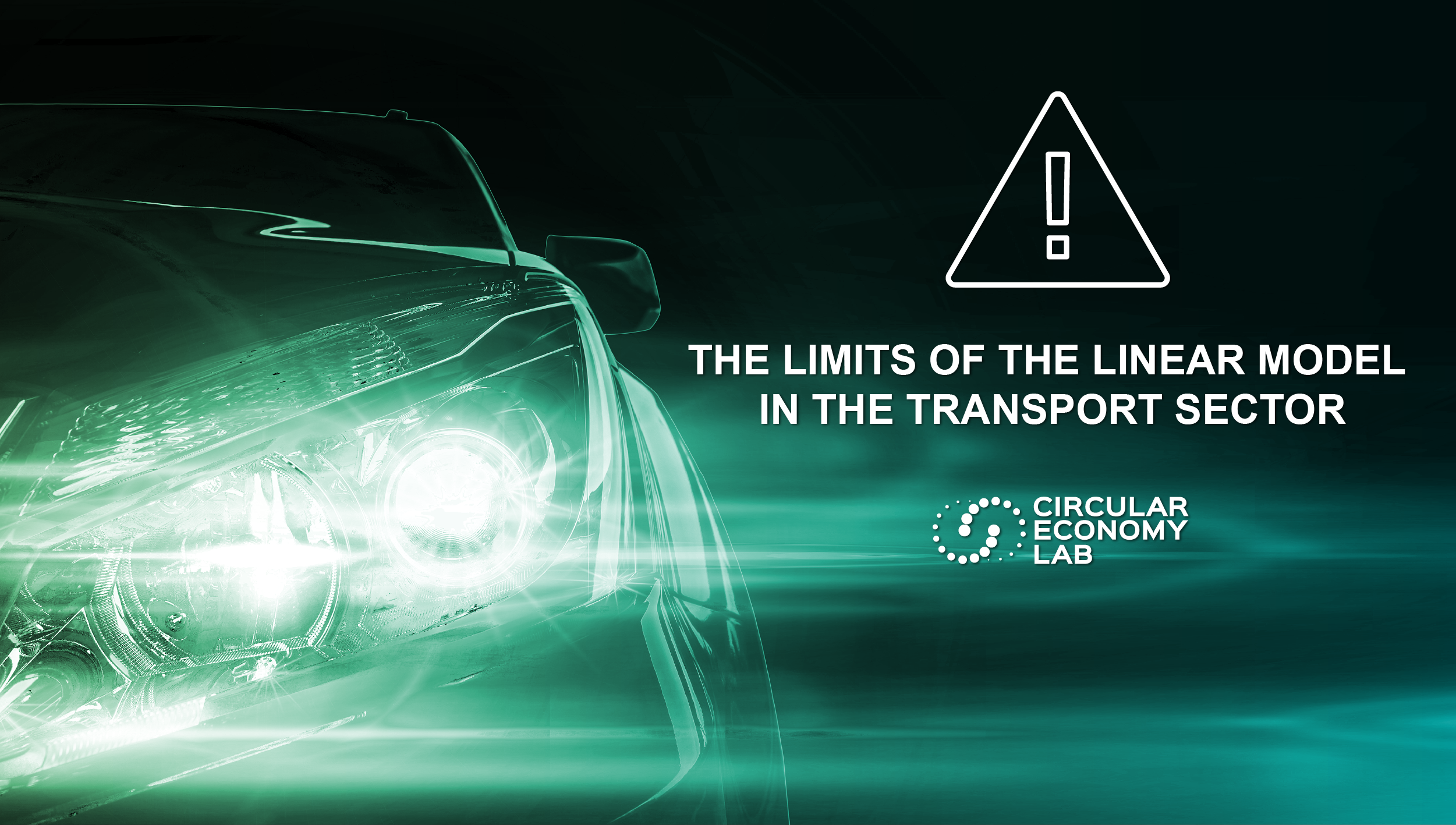
The limits of the linear model in the transport sector
Dependence on the use of raw materials that are increasingly difficult to find, poor efficiency in the use and disposal of end-of-life vehicles, emissions of climate-changing gases, and consequences for the financial resources of families: while contributing significantly to the labor market and the growth of the economy, the transport industry is one of the sectors with the most impact on our continent due to a linear model of development which has shown all its limits in recent years.
According to data from the Ellen MacArthur Foundation, the sector employs 13% of all virgin raw materials used each year globally. Many of the elements necessary for the production of vehicles are part of the so-called "critical raw materials" (CRM), i.e. materials of strategic importance for Europe whose scarcity and concentration in countries with high geopolitical risk determines severe supply risks. A theme, the latter, particularly relevant in the case of electric vehicles, because many elements of the CRM list - such as lithium and cobalt - are essential for the production of batteries.
The limits of the linear model of production and development of the sector emerge in all their seriousness when the moment of the end of life of vehicles approaches: according to Accenture, 13% of the reusable materials of a car marketed in Europe end up in landfills, while according to Ellen MacArthur Foundation European cars spend 92% of their life cycle parked on the street. Finally, when cars move, they carry only 1.5 people on average, well below their potential for use.
Things are no better as regards the emission of greenhouse gases: according to data reported by the European Environment Agency, from 1990 to 2018, the transport sector saw an increase in greenhouse gas emissions of 33.5%, becoming directly responsible for about a quarter of the total CO2 emissions in the European Union due, above all, to road transport which alone produces 71.7% of total emissions.
Finally, the economic impact generated by the negative externalities described above should not be underestimated. Also, according to the Ellen MacArthur Foundation, 20% of the average gross household income in Europe is used for expenses related to owning a car, and urban transport is responsible for a variable percentage between 20 and 50% of the total energy consumption of city (not counting industrial activity). Even concerning health, a critical point has been reached, considering that around 90% of European citizens are exposed to critical levels of air pollution.
In this context, it should not be forgotten that the transport sector contributes around 5% to the GDP of the European Union, employing more than 10 million people, while the automotive industry, closely connected to the sector, has a turnover that alone generates 7% of European GDP, employing 13.8 million workers, or 6.1% of total EU employment according to the European Commission. Data confirms the importance that mobility represents for European companies and global supply chains.
To contain the negative impacts generated by this sector, without however reducing its importance for the economy and employment, it is, therefore, necessary to promote a new production system capable of maximizing the use of resources, optimizing energy use, and reducing harmful emissions. This is possible only through a transition from a linear paradigm, from which the transport sector is strongly characterized, to a circular one, which through new technologies and business models can free economic growth from the exploitation of resources and atmospheric pollution.